People
Did ‘Beasts of No Nation’ Director Rip Off Richard Mosse’s Photographs?
Mosse says Fukunaga reached out to him to “pick his brain.”
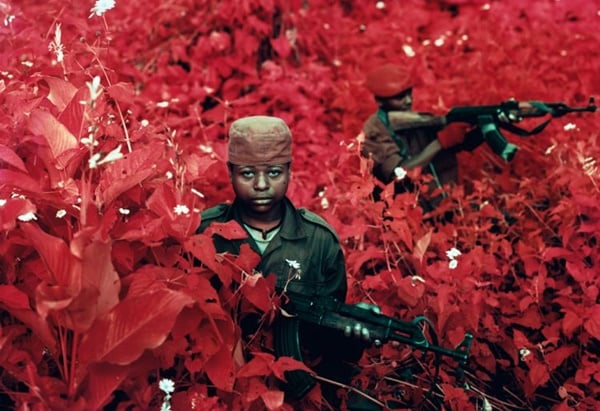
Mosse says Fukunaga reached out to him to “pick his brain.”

Christian Viveros-Fauné

About two-thirds through the acclaimed Netflix production Beasts of No Nation (2015), the movie’s lead character, a thirteen-year-old child soldier named Agu, played by Abraham Attah, takes a hallucinogenic drug called “gun juice”: it causes the landscape to turn from jungle green to shocking red. Equally shocking is the accusation that the film’s celebrated director, Cary Fukunaga of True Detective fame, lifted the scene from the crimson-hued work of Irish photographer and filmmaker Richard Mosse without credit.
Since the film’s release, several journalists have picked up on the similarities between crucial footage in the film and Mosse’s well-known artwork. Writing in the pages of Esquire, Miranda Collinge compared the Irishman’s images and “the film’s central violence sequence,” and concluded that it “owes a significant (and hopefully acknowledged somewhere) debt to the fuchsia-stained grasslands of Richard Mosse’s photos.”
Erin Whitney, blogging in HuffPost, described one of the film’s “most breathtaking sequences” as being shot with “what appears to be infrared film.” The results, she said, “reference” Mosse’s own film The Enclave.
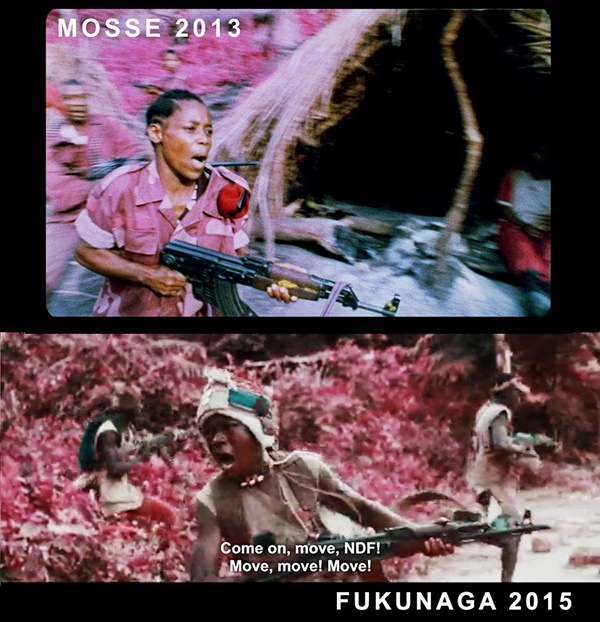
Image: Courtesy of Richard Mosse.
Other reviewers, like film critic Dave Calhoun of Time Out London have also noted the similarities between Mosse’s modest images and Fukunaga’s $6 million movie, for which Netflix paid $12 million for distribution rights. “There’s an episode when the boys take hallucinogens and all the foliage onscreen turns pink,” he wrote in late October; that scene, he continues, was “surely inspired by the Irish artist Richard Mosse’s Eastern Congo-set 2013 film installation which uses the same technique.”
Like last month’s belated admission by rapper Drake that he made unacknowledged (but eventually credited) use of James Turrell’s color-saturated installations for his music video “Hotline Bling,” Fukunaga’s borrowing appears to be another episode of “It’s not stealing if I can afford the potential legal bills.” That’s the kind of image appropriation that happens when bigger and more powerful members of the entertainment industry—like Fukunaga and Netflix—rationalize the pilfering of original ideas from their poorer fellow artists with little or no credit and zero remuneration.
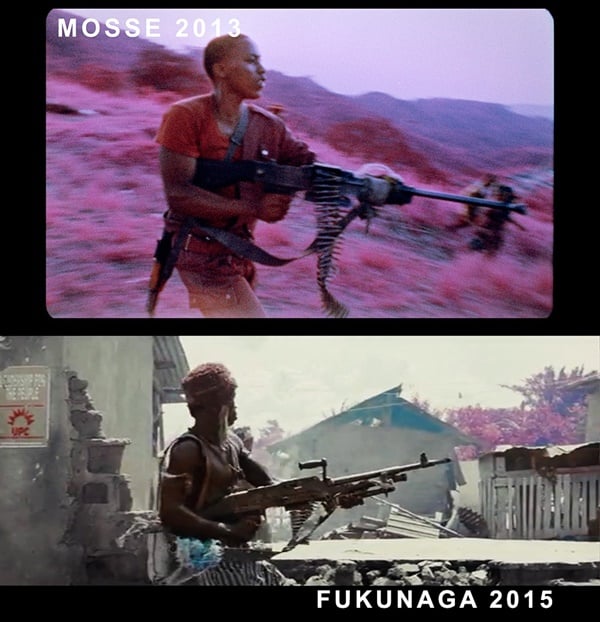
Image: Courtesy of Richard Mosse.
Other such cases of contentious borrowing of a photographer’s work by the film and music industries include the 1994 suit Annie Leibovitz brought against Paramount Pictures for the unauthorized use of her Vanity Fair cover photo of a pregnant Demi Moore. The studio had created a promotional campaign for the movie Naked Gun 33 ½ featuring a spoof of the photo with the actor Leslie Nielsen in place of Moore.
David LaChapelle likewise filed a suit in 2011 against Rihanna and her label Def Jam/UMG claiming the pop star took various scenes from her music video “S&M” directly from his pictures. About the litigation, LaChapelle told The Guardian, “This is not personal, it’s strictly business. Musicians commonly pay to sample music or use someone’s beats and there should be no difference when sampling an artist’s visuals.”
Though LaChapelle successfully settled for “an undisclosed amount” (he had previously sought $1 million in damages), Leibovitz did not fare so well. In her case, the use by Paramount Pictures was considered a parody and thus “fair use” of the artist’s copyrighted material.
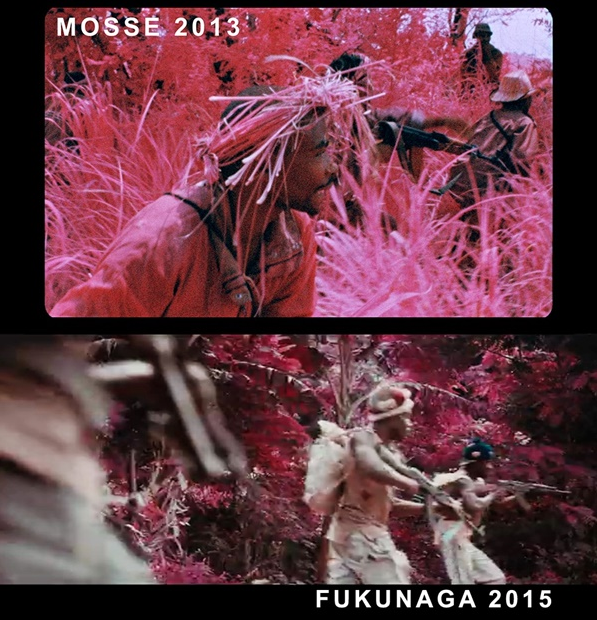
In more recent instances of such lawsuits, like that involving Richard Prince and photographer Patrick Cariou, the wobbly copyright standard has come under newfound scrutiny. Among the legal experts reexamining the statute’s application are Stanford Law School professors Andrew Gilden and Timothy Greene, who authored a 2013 University of Chicago Law Review paper titled “Fair Use for the Rich and Fabulous?” In the brief, Gilden and Greene worry that the courts today are converting “the right to rework, comment on, or otherwise engage with creative works into a privilege largely reserved for the rich and famous.”
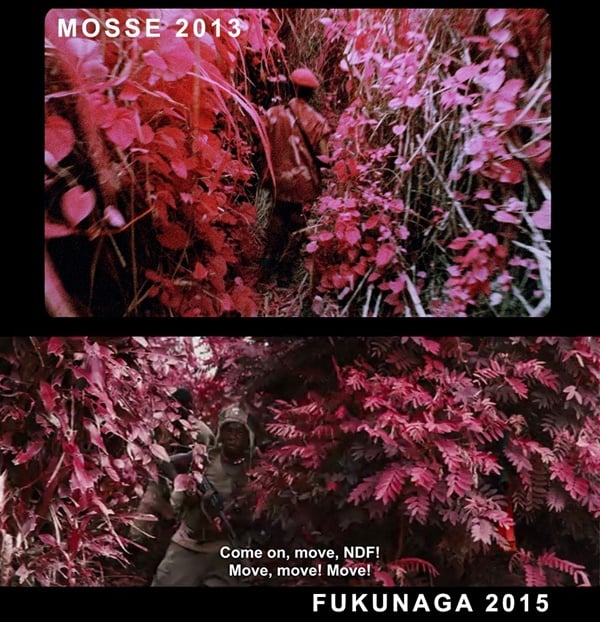
Image: Courtesy of Richard Mosse.
But all this begs the question: What does the victim of this alleged theft make of the fact that images very much like his benefit the chances of success of Beasts of No Nation, a possible Oscar contender? When reached for comment, Mosse said he does not intend to sue—despite the fact that he’s broken down a sequence-by-sequence comparison of the offending scene with frames from his and Fukunaga’s films (which we reproduce here). But Mosse has released a short statement for artnet News in which he reveals that Fukunaga personally reached out to him during the making of the Netflix film:
Imagery that I have been making in Congo since 2010 has been used in a derivative scene from the new film Beasts of No Nation. The film’s director, Cary Fukunaga, emailed me during production to—as he explained—“pick your brain” because “some of your work has struck our aesthetic appetite.” However, he has never cited my work as an influence and even gone out of his way to conceal his sources. I feel it is important to restore the correct authorship to this imagery. Neither myself nor any my collaborators were involved in this film, and we would like to draw a clear boundary between Fukanaga’s Beasts of No Nation and what we were trying to achieve with The Enclave. I’d also like to say thank you to the many supporters who have contacted me about this, and hope this clears up any confusion.
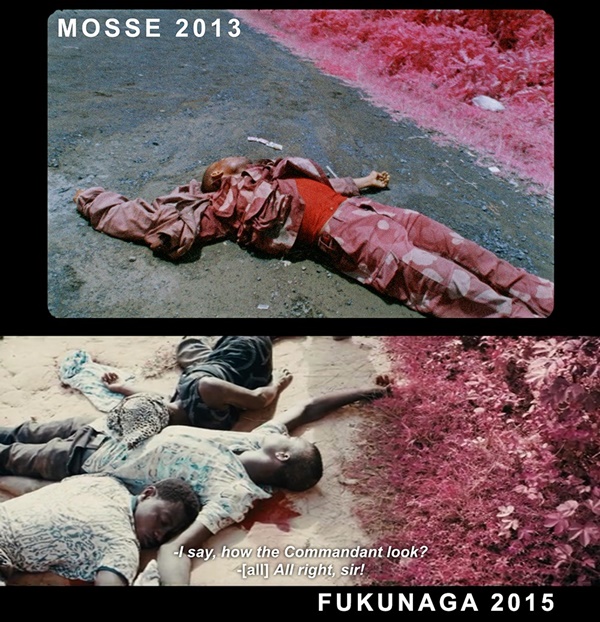
Image: Courtesy of Richard Mosse